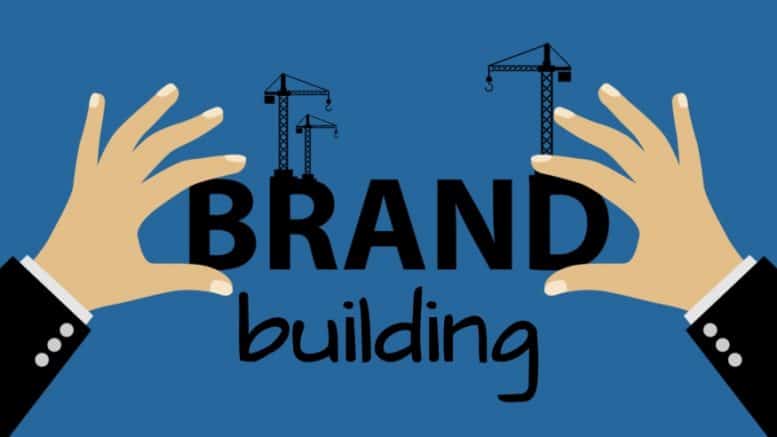- 1. Talking Too Quickly
- 2. Reading Directly from Slides
- 3. Overloading Slides with Too Much Information
- 4. Weak Openings or Unclear Messaging
- 5. Not Tailoring the Presentation to the Audience
- 6. Lack of Confidence or Poor Body Language
- 7. Not Connecting Emotionally with the Audience
- 8. Running Over the Allotted Time
- 9. Struggling with Audience Questions
- 10. Boring the Audience / Failing to Engage
- 11. Using Excessive Jargon or Technical Terms Without Explanation
- 12. Lack of Clear Takeaway or Call to Action
- Team Presentation Success Toolkit: Preventing Future Mistakes
The 12 Presentation Mistakes That Make Your Team Look Amateur (And Quick Fixes)

When your team stands up to present, their performance directly reflects on your leadership. A polished, confident presentation can cement your team’s reputation as professionals who know their stuff. Conversely, a fumbling, disorganized presentation can undermine months of hard work in minutes.
According to research from the Corporate Executive Board, presentation skills are among the top factors influencing career advancement for high-potential employees (source). For team leaders, the stakes are even higher, as your team’s presentation abilities can make or break critical initiatives.
This article identifies the twelve most common presentation mistakes that make teams look amateur and provides practical fixes you can implement immediately. By addressing these issues proactively, you’ll transform your team’s presentations from potential embarrassments into powerful demonstrations of competence.
1. Talking Too Quickly
The Mistake: When nervous, team members often rush through their material, speaking at an unnaturally fast pace. This makes it difficult for the audience to absorb information and creates the impression that the presenter is anxious or unprepared.
According to presentation experts at Second Nature, speaking too quickly is one of the top presentation killers that immediately diminishes audience engagement (source).
Before: A team member delivers 15 slides of detailed product updates in 5 minutes, speaking rapidly and rarely pausing.
After: The same team member delivers 8 key points over 5 minutes, speaking at a measured pace with strategic pauses after important points.
Quick Fix: Implement the “pause practice” technique. Have team members rehearse inserting a full one-second pause after each major point and between slides. This forces a rhythm that prevents rushing and gives the audience time to process information. For important presentations, conduct timed rehearsals where team members must hit minimum time targets rather than racing to finish.
2. Reading Directly from Slides
The Mistake: Presenters who read word-for-word from slides create a disconnected experience. The audience feels they could have just read the presentation themselves, and the presenter appears unprepared.
Benjamin Ball Associates notes that reading from slides is a clear sign the presenter hasn’t properly prepared and diminishes perceived expertise (source).
Before: A team member turns away from the audience, reading complete paragraphs verbatim from text-heavy slides.
After: The same presenter uses slides with simple visuals and key phrases, elaborating naturally while maintaining eye contact with the audience.
Quick Fix: Institute a “six words per line, six lines per slide” rule for all team presentations. This forces brevity and prevents the temptation to read. Have team members practice with note cards containing talking points rather than scripts. During rehearsals, consider having someone control slide advancement to prevent presenters from relying on the screen.
3. Overloading Slides with Too Much Information
The Mistake: Slides crammed with text, data, and visuals overwhelm audiences and signal that the team hasn’t properly distilled their message.
Research shows audiences retain only about 10% of what they hear but 65% of what they both see and hear when the visual isn’t overwhelmed with content (source).
Before: A technical slide containing three charts, a table of data, and eight bullet points with complete sentences.
After: The same information split across three focused slides, each with a single clear visual and a memorable headline conveying the key takeaway.
Quick Fix: Implement the “one idea per slide” rule. For each existing slide, ask: “What’s the single most important thing the audience should take away?” Create a new slide focused solely on that point, then repeat for secondary messages. Institute peer reviews where team members challenge each other to reduce slide complexity before finalizing decks.
4. Weak Openings or Unclear Messaging
The Mistake: Starting with pleasantries, company background, or agenda slides wastes the critical opening moments when audience attention is highest. Similarly, presentations without a clear central message leave audiences confused about the key takeaway.
Leadership assessment data shows that presentations lacking a strong opening and clear central message significantly reduce presenter influence and perceived competence (source).
Before: “Good morning everyone, thanks for joining us today. I’m John from the product team, and we’re going to walk through our quarterly update. Here’s our agenda for today…”
After: “Our new customer acquisition tool has increased sales conversions by 27% in initial testing. Today, I’ll show you how we can scale this success across all regions by Q3.”
Quick Fix: Require all team presentations to begin with a “headline” slide that clearly states the central message in one compelling sentence. Have presenters answer these questions when creating their opening: “What’s the one thing I want the audience to remember? Why should they care? What action do I want them to take?” This ensures presentations start with impact and clarity.
5. Not Tailoring the Presentation to the Audience
The Mistake: Generic presentations that aren’t adapted to the specific audience show a lack of preparation and respect. Different stakeholders have different priorities, concerns, and levels of technical knowledge.
Beth Sherman, presentation coach, emphasizes that failing to research and customize content for specific audiences is one of the most common mistakes that undermines presenter credibility (source).
Before: A technical team presents the same feature update to executive leadership that they previously delivered to the engineering department, filled with implementation details and code-level explanations.
After: The same team presents to executives with a focus on business impact, strategic alignment, and ROI, saving technical details for an appendix.
Quick Fix: Create an “audience profile template” that team members must complete before building any presentation. Include questions like: “What does this audience already know? What do they care about most? What objections might they have? What level of detail is appropriate?” Then review presentations to ensure they match the audience profile.
6. Lack of Confidence or Poor Body Language
The Mistake: Fidgeting, avoiding eye contact, using filler words like “um” and “uh,” or displaying closed body language undermines the content of even the best-prepared presentation.
According to Benjamin Ball Associates, non-verbal communication accounts for up to 93% of how audiences form impressions of presenters, making body language critical to presentation success (source).
Before: A team member stands rigid behind a podium, gripping notes tightly, eyes down, speaking in a monotone voice.
After: The same person moves confidently around the front of the room, makes eye contact with different audience members, varies vocal tone, and uses open gestures to emphasize key points.
Quick Fix: Implement “confidence building rehearsals” where team members practice in front of colleagues who provide specific feedback on body language. Use video recording so presenters can see themselves and make adjustments. Create a simple checklist of physical behaviors to practice: standing tall, making eye contact, using deliberate gestures, and varying vocal delivery.
7. Not Connecting Emotionally with the Audience
The Mistake: Presentations that focus exclusively on facts and data without stories, examples, or emotional appeals fail to engage audiences on a human level.
Research confirms that decisions are made emotionally first, then justified rationally, making emotional connection essential for persuasive presentations (source).
Before: A product launch presentation featuring 15 slides of specifications, features, and technical capabilities without context or customer relevance.
After: The same presentation opening with a customer story that illustrates the problem, followed by how the product solves real user pain points, with technical details supporting the narrative.
Quick Fix: Require every team presentation to include at least one story, case study, or real-world example that illustrates the human impact of the information being presented. Create a “story bank” of customer anecdotes, success cases, and relevant examples that team members can draw from when building presentations.
8. Running Over the Allotted Time
The Mistake: Exceeding the time limit shows disrespect for the audience’s schedule and indicates poor planning and preparation.
Second Nature’s presentation research shows that running over time is one of the quickest ways to lose audience goodwill and attention, with engagement dropping dramatically after the scheduled end time (source).
Before: A 30-minute presentation slot with 45 slides that forces the presenter to rush through the final 20 slides in 5 minutes, skipping crucial information.
After: A 25-minute presentation with 15 focused slides, leaving time for questions and finishing on schedule.
Quick Fix: Establish a firm “80% rule” where presentations should be designed to use only 80% of the allotted time, leaving 20% for questions or discussion. During rehearsals, time each section and identify content to cut if running long. Assign a timekeeper role during important presentations who gives the presenter visual cues at 5-minute intervals.
9. Struggling with Audience Questions
The Mistake: Being unprepared for questions, becoming defensive, or providing long-winded, unclear answers undermines the team’s credibility and expertise.
Leadership assessment data indicates that how presenters handle challenging questions has a greater impact on perceived competence than the main presentation itself (source).
Before: When asked a challenging question, the presenter becomes flustered, provides a rambling 3-minute response that doesn’t directly address the question, and seems defensive.
After: The same presenter confidently acknowledges the question, provides a concise 30-second response addressing the core issue, and offers to follow up with additional details if needed.
Quick Fix: Implement “question anticipation” as part of presentation preparation. Have team members list the 10 most difficult questions they might receive and prepare concise answers for each. Practice the PREP method (Point, Reason, Example, Point) for structuring responses. Conduct mock Q&A sessions where team members challenge each other with tough questions.
10. Boring the Audience / Failing to Engage
The Mistake: Monotonous delivery, lack of variety in content format, and failing to involve the audience results in disengagement and information retention close to zero.
Studies show that audience attention drops dramatically after just 10 minutes unless the presenter actively reengages them through interaction, variation, or stimulus change (source).
Before: A presenter delivers a 30-minute monologue with identical-looking text slides, standing in the same position the entire time.
After: The same presentation incorporates a brief audience poll, a short video clip, varied slide formats, and a quick pair-discussion halfway through.
Quick Fix: Institute the “10-minute rule” where something must change every 10 minutes to reactivate audience attention. This could be a different speaker, an interactive element, a video, a demonstration, or even just a dramatic change in slide style. Create a presentation template that reminds team members to include engagement elements.
11. Using Excessive Jargon or Technical Terms Without Explanation
The Mistake: Using industry jargon, acronyms, or technical language without explanation excludes audience members and creates an impression of poor communication skills.
Beth Sherman notes that excessive jargon is one of the fastest ways to alienate an audience and create barriers to understanding (source).
Before: “Our API implementation uses JWT authentication with OAuth2 flow to manage SSO integration with the client’s existing IAM infrastructure.”
After: “We’ve created a secure login system that connects seamlessly with the client’s existing user accounts—no new passwords needed.”
Quick Fix: Create a “jargon alert” system where team members review each other’s presentations specifically for unexplained technical terms. For necessary technical terms, build a simple glossary slide that can be referenced during the presentation. Implement the “grandmother test”—if your grandmother wouldn’t understand the explanation, simplify it further.
12. Lack of Clear Takeaway or Call to Action
The Mistake: Ending presentations without a clear indication of what the audience should do with the information leaves them wondering, “So what?” and wastes the opportunity to drive action.
Benjamin Ball Associates research shows that presentations without a clear, specific call to action are 40% less likely to achieve their intended business outcomes (source).
Before: “That concludes our update on the new marketing campaign. Thanks for your time. Any questions?”
After: “Based on these results, we recommend increasing the budget for social media advertising by 20% and launching the video campaign next month. We need your approval by Friday to stay on schedule. What questions can I answer to help you make this decision?”
Quick Fix: Require every team presentation to end with a slide titled “Next Steps” that clearly outlines: what decisions need to be made, who needs to make them, what actions the team will take, and specific timeframes. Practice “bookending” presentations by connecting the conclusion directly back to the opening promise, showing how the information presented supports the recommended action.
Team Presentation Success Toolkit: Preventing Future Mistakes
To build sustainable presentation excellence in your team, implement these guardrails:
1. The 3-3-3 Rule: Every presentation must communicate no more than 3 main points, include at least 3 stories or examples, and be rehearsed a minimum of 3 times.
2. The Presentation Partner System: Assign team members as “presentation partners” who provide feedback on rehearsals and help refine content before delivery.
3. The 5-Minute Recording Challenge: Have team members record their opening and closing 5 minutes and review before important presentations.
4. The Slide Diet Challenge: After completing a presentation deck, challenge team members to cut 30% of the slides without losing key messages.
5. The Purpose-Audience-Message Framework: Before creating any presentation, require team members to document: the specific purpose, detailed audience analysis, and the single core message in one sentence.
By addressing these twelve common presentation mistakes, you’ll transform your team’s presentations from potential embarrassments into powerful demonstrations of competence and credibility. The investment in fixing these issues pays enormous dividends in how your team is perceived, the influence they can exert, and ultimately, the results they can achieve.
Remember that presentation excellence is not innate, it’s a learnable skill that improves with deliberate practice and thoughtful feedback. By implementing these fixes and guardrails, you’ll build a team that presents with confidence, clarity, and impact.


